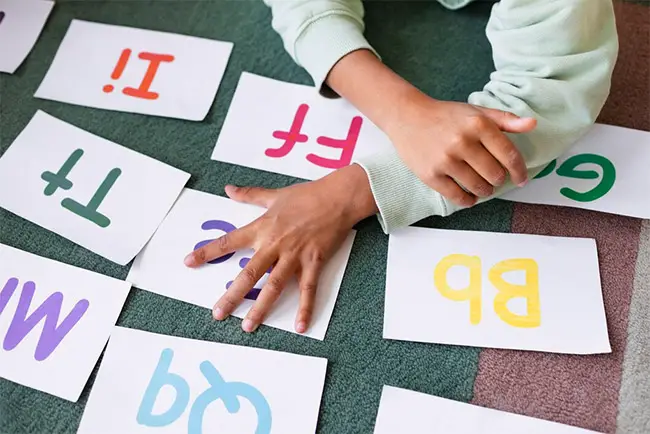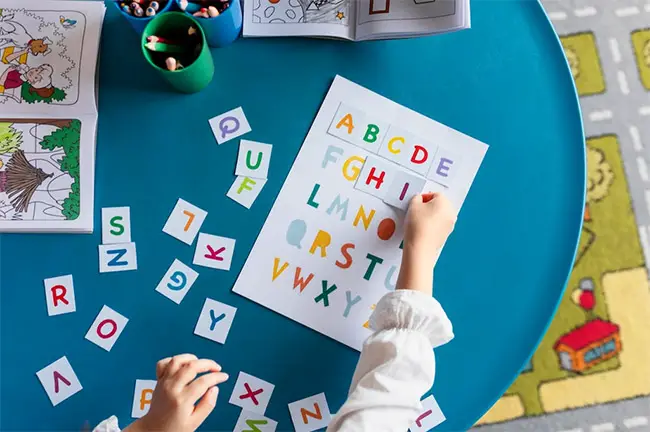Planning an Alphabetical Order Worksheet: Essential Tips and Creative Ideas
Alphabetical order worksheets are a staple in language education. Creating them can be a fun and engaging way to help young students learn and practice alphabetization skills. This essential literacy tool not only aids in understanding the basic structure of language but also enhances organizational skills.
In this post, educators can find a range of basic helpful tips and practical ideas to design both effective and enjoyable alphabetical-order worksheets for their classes.
Always Lay the Foundation First
When introducing your alphabetical order worksheet, it’s crucial to start with the basics. So, begin by making sure that students are comfortable with the alphabet itself. Activities like reciting the alphabet, identifying letters, and simple sorting tasks can help lay a solid foundation. Initially, you may focus on arranging words by the first letter before gradually introducing sorting by the second or third letters.
Determine the Group Level and Task Focus
To create a truly effective worksheet, you also need to understand the proficiency level of your group. That’s what will guide you in the design process and help define the task’s focus.
For younger or less experienced learners, you should use simple, familiar words. As proficiency grows, introduce more complex words and concepts, like alphabetical order based on the second or third letter. This gradual increase in difficulty helps maintain student engagement and learning effectiveness.

Incorporate Varied Levels of Difficulty
To cater to a diverse classroom, worksheets should have varied difficulty levels. That means starting with straightforward tasks and progressively introducing more challenging ones. For example, begin with those about sorting a short list of three-letter words before moving on to longer words or those with similar beginnings. This approach implies that all students remain challenged and engaged, regardless of their starting level.
Make It Interactive and Fun
Worksheets don’t have to be mundane. Therefore, try to turn the learning process into a game by incorporating crossword puzzles or word searches that focus on alphabetical order. Use colorful images in the design or apply themes, such as animals or food, and ask students to sort words related to these themes. Interactive elements like cut-and-paste exercises or digital drag-and-drop activities can also make learning more enjoyable and memorable while enhancing retention.
Implement Real-World Examples
Furthermore, you can use real-world examples. This will make the exercises in your worksheet more relatable and practical.
For instance, have young learners alphabetize a list of famous book titles and names of countries, or ask them to alphabetically arrange items from a grocery list or names from a sports team. This approach not only makes the task more fascinating but also demonstrates the practical application of the skill.
Encourage Group Work and Collaboration
It can be beneficial to encourage group activities where the class works together to arrange words or create lists. This way, you’ll make assignment completion more enjoyable, enhance students’ social skills, and foster a collaborative learning environment. Group work can also help students learn from each other and gain different perspectives on the task.
Focus on Vocabulary Development
Another great idea is to use alphabetical-order worksheets as an opportunity for vocabulary development. You can do this by introducing new words within the worksheets and then encouraging students to explore their meanings. This dual focus contributes to improving alphabetical ordering skills and, at the same time, naturally expands the learners’ vocabulary.
Adapt to Individual Interests
Tailoring the content of your worksheets to the specific interests of your students can have a great positive impact on grasping the objective. To illustrate: if a learner is interested in space, create a worksheet that involves alphabetizing planets or space-related terms.
Establish Cross-Curricular Connections
Additionally, you can consider such a valuable method as integrating concepts from other subjects into the worksheets. For example, in a science lesson about animals, have students alphabetize animal names. This approach aids in reinforcing alphabetical ordering abilities and deepens knowledge in other subject areas.
Resort to Multisensory Learning
More so, think of implementing multisensory activities to closely cater to different learning styles. To give you an idea, use tactile letters for sorting exercises or incorporate auditory elements like alphabet songs. These varied approaches can make learning more effective and accessible for all.

Use Assessment as a Tool for Improvement
Remember to regularly assess students’ skills through the worksheets. This can be done informally, through observation, or formally, with quizzes. Use the results to adjust the level of difficulty and focus of future tasks, ensuring that they remain challenging and relevant to each student’s development. Also, identify areas of strength and those needing improvement, and provide constructive feedback to your learners.
Encouraging Self-Practice
Provide additional resources to practice outside of the classroom. Offer take-home worksheets or suggest simple alphabetical ordering exercises that can be done with everyday items. This self-practice improves classroom learning and promotes independent study habits.
Takeaway
Creating effective alphabetical-order worksheets is about balancing educational objectives with fun and engagement. By varying your approach to their creation, you can design those that are not only educational but also captivating and relevant to your class. Regular assessments, feedback, and adaptation to individual interests and learning styles further enhance the effectiveness of these materials, making them invaluable tools in literacy teaching.

